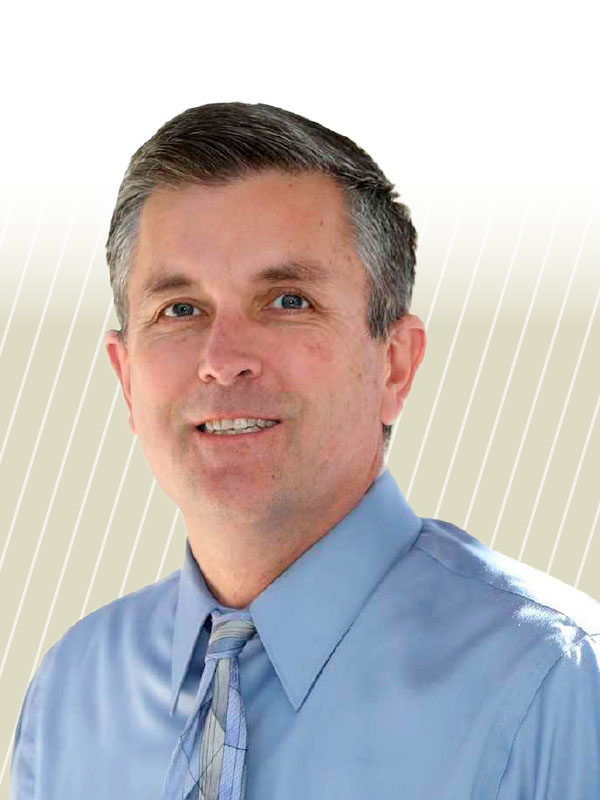When Hurricane Sandy devastated the New York/New Jersey area in 2012, volunteers traveled from across the U.S. to provide relief to those in desperate need of food, shelter, and medical services. Whitney J. Pugh, a local Red Cross volunteer in Utah, jumped at the opportunity to help.
“We slept on cots in a gymnasium in a shelter at one of the SUNY campuses along with 300 or 400 other people and delivered hot meals to impacted neighborhoods,” he says. “These folks’ lives had been turned upside down. We couldn’t solve all their problems, but we could take the edge off of their hunger.”
As the executive director, budget and planning, at Utah State University in Logan, Pugh lives by a certain philosophy: “I try to say ‘yes’ to projects and assignments that are new opportunities and get me out of my comfort zone.”
You’ve had an interesting progression at Utah State University. You started out as the associate director in the office of budget and planning and were quickly promoted. How did scholarships land on your plate?
Scholarships represent a big line item in the university’s budget. As the budget director, I was already working closely on the scholarship budget. In an effort to strengthen internal controls, it seemed natural to move the scholarship reporting function to business and finance. As far as we know, that reporting line is not done anywhere else, but it’s been a successful experiment.

How did you strengthen internal controls?
My scholarship team and I greatly reduced the number of people who could “touch” the scholarship system, which awarded more than $70 million in 2018 but was widely accessible by staff. We created a scholarship committee comprising academic administrators, faculty, and staff. The members worked together to implement a scholarship policy, which the university hadn’t had throughout its 130-year history.
The policy covers areas such as reconciling accounts, avoiding conflicts of interest, separating duties so the same person does not handle a scholarship all the way through the process, and following written procedures. The policy makes sure that all students have equal access to awards and are treated consistently and fairly.
In 2012, you began leading the institution’s effort to implement its shared services model with no outside consulting help. Where did you start?
The vice president and I, with a few others, singled out two universities—Purdue and Penn State—as models we thought would work for us. We visited both institutions and talked to their shared services teams and departmental administrators to get perspectives on what was—and wasn’t—working. Each of their models had been in place for 40 years or so.
What type of model did you implement?
We connected all unit business officers to the vice president of business and finance. Instead of moving to a central or satellite location, these people stayed embedded in their units and now handle all the financial management and transactional support for their units. They essentially have remained part of their unit’s team but have a direct reporting line to me.
What did you hope to achieve with this change?
We wanted to: redefine jobs so business services staff were handling business transactions; reinforce internal controls to ensure that all our transactions were handled appropriately; and nurture and reinforce an ethical culture among business officers.
How many business officers are part of this redesigned system?
We have 185, although not all have the title of business officer. Each college has a senior person called a financial officer, who reports to me. We also have business assistants and business managers.
What challenges did you encounter when implementing this new shared services model?
Some universities take a “big bang” approach and implement 100 percent of their departments at once. We phased ours in over the course of four years. It was a challenge to simultaneously manage employees who were already implemented, help transition those in the process, and work with those who were gearing up for the conversion.
We encountered the typical resistance to change. We had to persuade people. Rumors about layoffs circulated. Ultimately, the early implementers became our change agents because they were able to show their results and let others know that the sky wasn’t falling.
Do you recommend that executives take four years to implement this model?
No, but I would recommend that they have a clear plan at the beginning that is endorsed by top executives and the governing board, if possible. Having that support for your initiative really stabilizes the model and implementation.
What mistakes do you think institutions are making with shared services?
Overpromising big savings. Business officers need to be cautious about this because it can really backfire. They also need to define the scope of shared services upfront and be clear about what they are doing and why they are doing it.
How much money did the university save?
That’s still to be determined. We definitely have become more efficient, but we haven’t as yet monetized our efficiencies. In the long term, I am confident we will save money.
During your career, what’s the most important professional lesson that you have learned?
The one that comes to mind is to be nice. I know that sounds simple, but there is so much divisiveness and negativity in the world. Everybody struggles with some challenge that we don’t know about.
Have you had an event in your life that changed your outlook or sense of purpose?
Yes. I served two years on a mission for my church when I was younger. It completely changed my life and helped me grow up.
How do you unwind from the pressures of the job?
I’m a homebody. My wife, Stacey, who teaches fourth grade at a local elementary school, was just named its teacher of the year. We have six kids, three boys and three girls. We try to make sure that the kids get to where they need to be. We stay involved in our church. I play the piano a bit. Mostly, I just try to do what my wife tells me.
Tell me something about yourself that your co-workers probably don’t know.
I conduct school assemblies every year and show the kids a collection of boomerangs I’ve made. I help the kids design their own paper boomerangs and teach them how to throw them. I call it “Boo-Yah Boomerang,” because that’s what we shout when the kids catch their own masterpieces.
How did you become interested in boomerangs?
You know those hobby books that show you how to juggle? Well, I was given one on boomerangs. My stepfather was a woodworker, so we started following some of the patterns to make our own wooden boomerangs. I have about 50 boomerangs, and I make a few more every year.
MARGO VANOVER PORTER, Locust Grove, Va., covers higher education business issues for Business Officer.



